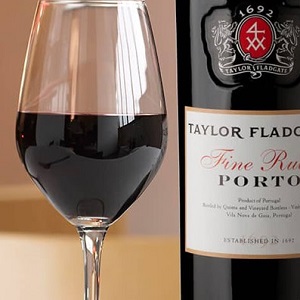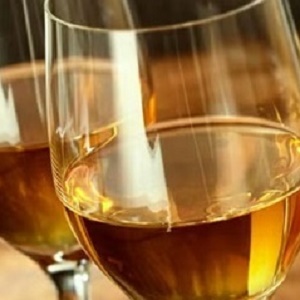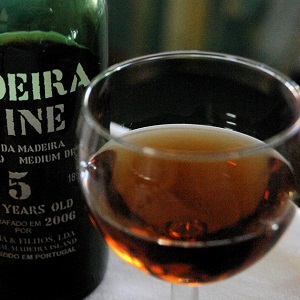Fortified Wine Styles
Each style of fortified wine (Sherry, Port, and Madeira) has unique flavors and characteristics influenced by the aging process (oxidative, biological, or reductive) and the grape varieties used.
While Sherries vary from bone-dry to syrupy sweet, Ports range from youthful and fruit-forward to rich and complex with oxidative notes, and Madeiras showcase a spectrum of styles, all benefiting from high acidity and a unique aging process that promotes remarkable longevity.

Port Wine

Sherry

Madeira
Sherry Styles
Fino and Manzilla
Aging
Undergoes biological aging under a layer of flor yeast in the solera system, protecting it from oxidation.Characteristics
Pale, dry, and delicate with flavors of green apple, almond, and bread dough. The flor imparts salty, yeasty, and slightly bitter notes.ABV
Typically around 15%.Best Consumed
Young and fresh, usually within a year or two of bottling.
Amontillado
Aging
Begins with biological aging under flor, similar to Fino, but then undergoes oxidative aging after the flor dies.Characteristics
Amber-colored, with a mix of Fino’s fresh, yeasty notes and deeper flavors from oxidation, like hazelnut, caramel, and tobacco.ABV
Usually around 17-18%.Best Consumed
Stable over time, can be enjoyed over several years.
Oloroso
Aging
Exclusively oxidative, as it is fortified to 17-18% ABV to prevent flor formation.Characteristics
Darker, richer, and full-bodied, with intense flavors of dried fruit, leather, spice, and walnut.ABV
Typically 18% or higher.Best Consumed
Stable over time, suitable for long-term aging.
Pedro Ximénez (PX)
Aging
Oxidative aging in the solera system, often for many years.Characteristics
Made from dried Pedro Ximénez grapes, PX Sherry is intensely sweet, thick, and syrupy with flavors of raisins, molasses, chocolate, and fig.ABV
Usually around 15-17%.Best Consumed
Very stable, can age for decades and remain drinkable after opening.
Port Styles
Ruby Port
Aging
Short maturation period, often in large oak or stainless steel tanks to minimize oxidation and retain bright fruit flavors.Characteristics
Bold red color, youthful and vibrant with flavors of ripe red and black fruits, such as cherry, plum, and raspberry.Subtypes
Includes basic Ruby, Reserve Ruby, and Late Bottled Vintage (LBV), with LBV generally more structured and intense.Aging Potential
Best enjoyed young to retain its fruitiness.
Tawny Port
Aging
Extended aging in smaller oak barrels, promoting oxidative aging.Characteristics
Tawny in color, with complex flavors of caramel, dried fruit, nuts, and spice due to prolonged oxygen exposure.Subtypes
Includes age-designated Tawnies (10, 20, 30, or 40 years) and Colheita (single-vintage Tawny).Aging Potential
Very stable, with older Tawny Ports offering more depth and complexity, and they are ready to drink upon release.
Vintage Port
Aging
Aged for a short period in barrels, then bottled young, where it continues to age reductively (without oxygen).Characteristics
Intense, structured, and concentrated with dark fruit flavors, such as blackberry, plum, and spice. Gains complexity over decades.Aging Potential
Meant for long-term aging; can mature for decades in the bottle, developing secondary and tertiary characteristics over time.
Madeira Styles
Sercial
Sweetness
The driest style of Madeira, with high acidity.Aging and Characteristics
Undergoes canteiro aging, developing flavors of citrus peel, almond, and light smoky notes, balanced by brisk acidity. Often served as an aperitif.Aging Potential
Ages exceptionally well and remains stable over decades.
Verdelho
Sweetness
Off-dry to semi-sweet.Aging and Characteristics
Can undergo estufagem or canteiro aging, leading to flavors of dried fruits, orange peel, and honey, with a notable acidity that balances the sweetness.Aging Potential
Also has good aging potential, with layers of complexity over time.
Bual (Boal)
Sweetness
Medium-sweet, offering a rich profile.Aging and Characteristics
Often aged through the canteiro method, yielding flavors of caramel, roasted nuts, and coffee, with moderate acidity that adds freshness.Aging Potential
Ages well and can develop complex, rich flavors over time.
Malmsey (Malvasia)
Sweetness
The sweetest style of Madeira.Aging and Characteristics
Rich and full-bodied, with flavors of toffee, chocolate, molasses, and fig, balanced by acidity to prevent it from feeling overly heavy.Aging Potential
Very long-lived and extremely stable, with the potential to develop complexity over decades.
Muscat Styles
Muscat de Beaumes-de-Venise (France)
Sweetness
100-120 grams/liter (10-12%).Alcohol
15-18% ABV.Characteristics
Intense aromas of apricot, orange, mandarin, muscat grape, caramel, honey, blossom.Age
Youthful and Unaged.
Rutherglen (Australia)
Sweetness
180-240 grams/liter (18-24%).Alcohol
17-18% ABV.Characteristics
Aromas of orange blossom, espresso, Turkish delight, nuts, toffee, dark chocolate, Christmas spice, rose hip, raisins.Age
Often aged for many years, developing extraordinary complexity and a luscious, velvety texture.